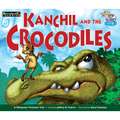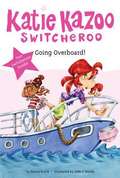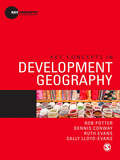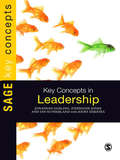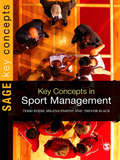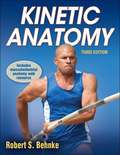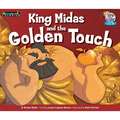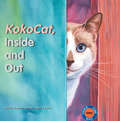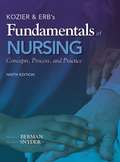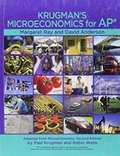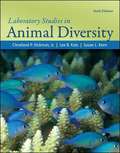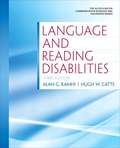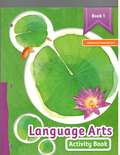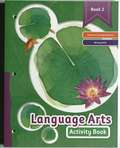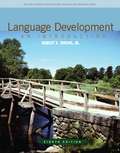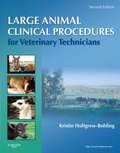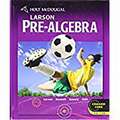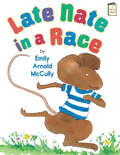- Table View
- List View
Kanchil and the Crocodiles: A Malaysian Trickster Tale
by Jeffrey B. Fuerst Gary Freeman Laura StromCan Kanchil the little mouse deer trick a few crafty crocodiles with terrible teeth?
Katie Kazoo, Switcheroo: Going Overboard!
by Nancy KrulikTen years of switcheroos! Happy anniversary, Katie Kazoo! With indoor mini golf, a chance to swim with dolphins, and her best friend, Suzanne, onboard, Katie's cruise vacation sounds like an ocean of fun! But, of course, the magic wind appears - twice in this Super Special - and blows everything off course! Young readers love the black-and-white illustrations that bring this fun chapter book series to life. .
Kavya-Vithi B.A. Sem-I - Ranchi University, N.P.U.
by Vindhyavasini Pande Arun Kumar Mithilesh SinghKavya - Vithi is a Hindi poerty book published by Bhasha Publisher and written by Dr.Vindhyavasini nandan Pande, Dr.Arun Kumar, and Dr.Mithilesh Kumar Singh. In this book the work is given about the poets and their poems.
kelehi Gunaya - කෙළෙහිගුණය
by Dickman Wijesinghe - දික්මන් විජේසිංහයෞවණයන් සඳහා ම රචිත ඉතාම රසවත් කථාන්තරයකි.
Key Concepts in Development Geography (Key Concepts in Human Geography)
by Ruth Evans Sally Lloyd-Evans Rob Potter Dennis Conway"An excellent and supremely accessible guide to some key issues in development geography" - Stuart Corbridge, London School of Economics "Provides a clearly stated, informed and strongly structured pathway through the key literatures and debates" - Jonathan Rigg, Durham University Organized around 24 short essays, Key Concepts in Development Geography is an introductory text that provides students with the core concepts that form contemporary research and ideas within the development geography discipline. Written in a clear and transparent style, the book includes: an introductory chapter providing a succinct overview of the recent developments in the field over 24 key concept entries that provide comprehensive definitions, explanations and evolutions of the subject excellent pedagogy to enhance students' understanding including a glossary, figures, diagrams, and further reading. Organized around five of the most important areas of concern, the book covers: the meanings and measurement of development; its theory and practice; work, employment and development; people, culture and development; and contemporary issues in development. The perfect companion for undergraduate and postgraduate students on geography degrees, the book is a timely look at the pressingly important field of international development studies today.
Key Concepts in Leadership (SAGE Key Concepts series)
by Stephanie Jones Jonathan Gosling Ian SutherlandWhat are the main characteristics of effective leadership? <P> <P> How can we understand leadership today?<P> This wide-ranging, inter-disciplinary book provides readers with a complete introduction to the essentials of leadership. Included here are accessible and insightful entries on what leadership is, how it is practised and the relevant strengths and pitfalls. The book provides a one stop introductory guide to one of the most central and contested concepts in the social sciences. An invaluable reference tool, this book offers insight into issues such as:<P> * Are leaders born or made?<P> * Authoritarian versus participative leadership<P> * The psychology of leaders and followers<P> * Leadership development<P> * Leadership styles, skills and functions<P> * Leadership in practice<P> This book is an indispensable guide to the central concepts of leadership for professionals and students alike.
Key Concepts in Sport Management (SAGE Key Concepts series)
by Milena Parent Terri Byers Trevor Slack"An accessible and different guide for students and practitioners alike... I'm sure that it will become a standard reference text for sports management" - Peter Taylor, Sport Industry Research Centre, Sheffield Hallam University "A must have introductory reference guide for graduate and undergraduate sport management students" - Paul M. Pedersen, Indiana University "Provides students, practitioners and researchers in the field of sport management with a valuable compilation of sensitizing concepts, definitions and interesting references" - Michel van Slobbe, European Sport Management Quarterly Sharp, clear and relevant this book meets the needs of those studying and researching within the growing discipline of sport management. The intelligently cross-referenced entries provide a concise overview of the key concepts in the field guiding you through the important debates, sources and research methods in the management and delivery of sport. The book introduces readers to the concepts at the centre of their studies; it suggests relevant further reading and thoughts for future research and applies academic theory to business and organizational problems in a real-world context. Written for students, academics and practitioners the entries are designed to meet study needs and include: Clear definitions Comprehensive examples Practical applications Effective research methods.
Kinetic Anatomy (Third Edition)
by Robert BehnkeCreated primarily for those who will work in physical activity fields, the third edition of Kinetic Anatomy continues to building on its previous editions to assert itself as the ideal resource for learning structural anatomy and how it affects movement. The text gives students a firm concept of musculoskeletal anatomy by systematically assembling each component of the human body. Layer by layer, readers will study bones, ligaments, joints, and muscles on the bones, as well as the nerves and blood vessels that supply these muscles that are essential for movement. Kinetic Anatomy, Third Edition, includes coverage of three major structures that are not often considered when studying the anatomy of movement: the brain, heart, and lungs. As the centerpieces for the nervous, cardiovascular, and respiratory systems, these structures are essential to human movement and are highlighted throughout the text where appropriate. In addition, other fundamental features make this resource a valuable tool for learning and teaching human anatomy: - A one-year subscription to Musculoskeletal Anatomy Review, an online anatomy program, provides an interactive forum for reviewing regional structural anatomy. - A new chapter on the head completes the regional approach followed in the text. - More information on muscle and motor units helps broaden information on movement potential in selected sport activities. - Expanded discussion on joint strength and movement and the function of muscles (agonists, antagonists, stabilizers, and synergists), levers, and exercise supports understanding of how the human body is constructed. - Full-color photos and illustrations enhance the learning experience. - New Functional Movement Exercises provide students with the opportunity for practical application of their studies by asking them to identify the prime mover, antagonist, fixator, and synergist muscle in a particular movement. - Hands On exercises throughout the book offer students practice in physically identifying anatomical structures on themselves or on a partner. Included with each new text is a key code allowing students one-year access to the online anatomy program Musculoskeletal Anatomy Review. This engaging supplement to the text offers a regional review of structural anatomy with exceptionally detailed, high-quality graphic images--the majority provided by Primal Pictures. Students can mouse over muscles and click for muscle identification, and each chapter features a pretest and posttest evaluation to help students pinpoint knowledge gaps and test their retention. The pretest can be taken multiple times and is generated randomly so it will never be the same, but the posttest may be taken only once. Test results can be printed and turned in so instructors have the option to use the tests as a grading tool. To further facilitate learning, each chapter in the book concludes with a review of the key terms referred to in the chapter, suggested learning activities, and review questions in multiple-choice and fill-in-the-blank formats. The answers to the questions are provided at the end of the book. For instructors, a new image bank accompanies the updated instructor guide and test package to aid in delivering the course content. Kinetic Anatomy, Third Edition, is an outstanding introductory resource for those who plan to specialize in any field related to physical activity. Readers will learn what structures are involved in movement and how those structures should function, allowing them to identify problems and correct them to enhance physical activity.
King Midas and the Golden Touch: A Greek Myth
by Laura Layton Strom Kirk Parrish Laura StromIn this retelling of the Greek Myth, King Midas loves gold more than anything else in the whole world! Or at least, he thinks he loves gold the most. . . .
King Midas's Gold
by Rebecca Grudzina Bill Greenhead Lori O'DeaEverything King Midas touches turns to gold. But he soon realizes that it is not always a good thing.
KokoCat, Inside and Out
by Lynda Graham-Barber Nancy LaneOne day, KokoCat, a well-loved housecat, sees an open door, a chance to escape her pleasant life, to explore an exciting world outdoors. Once outside, she finds that life is more frightening and less enjoyable than she bargained for. Hungry, lost, and alone, KokoCat takes shelter under a dumpster and dreams of her former life inside. In vibrant images, KokoCat's story shows the reader that keeping a domestic cat indoors is better both for the well being and longevity of the cat as well as for the birds and wild animals on which a cat preys. The book's final page for parents and adults offers important information, provocative questions, and tips to increase young readers' awareness of this important animal health and welfare issue. Lynda Graham-Barber's abiding passions for writing and animals have intermingled for four-decades, as children's book editor, writing teacher, author of thirteen books, and animal rights advocate. The author, who holds an MFA in writing for children from Vermont College, lives in a small stone cottage, which she helped build, situated on 160 wooded acres in the Northeast Kingdom, Vermont, with her artist husband David and their rescued dog Biscuit. Nancy Lane has been an award-winning illustrator for the last twenty years. Her picture books include Call the Horse Lucky and A Home for Dakota (both from The Gryphon Press). She lives in the Finger Lakes region of upstate New York with her family and her rescued dog and cats.
Kozier & Erb's Fundamentals of Nursing: Concepts, Process, and Practice (9th Edition)
by Audrey Berman Shirlee J. SnyderThis reviewed and revised ninth edition addresses the concepts of contemporary professional nursing including caring, wellness, health promotion, disease prevention, holistic care, multiculturalism, nursing theories, information technology, nursing research, ethics, advocacy, etc. The content has been updated to reflect the latest nursing evidence and the increasing emphasis on aging, wellness, safety, and home-and community-based care.
Krugman's Microeconomics for AP*
by Margaret Ray David AndersonKrugman’s Microeconomics for AP* combines the successful storytelling, vivid examples, and clear explanations of Paul Krugman and Robin Wells with the AP* expertise of Margaret Ray and David Anderson. In this exciting new AP text, Ray and Anderson successfully marry Krugman’s engaging approach and captivating writing with content based on The College Board’s AP Economics Course outline, all while focusing on the specific needs and interests of high school teachers and students.
Laboratory Studies for Animal Diversity (Sixth Edition)
by Lee Kats Susan Keen Cleveland P. HickmanLaboratory Studies in Animal Diversity offers students hands-on experience in learning about the diversity of life. It provides students the opportunity to become acquainted with the principal groups of animals and to recognize the unique anatomical features that characterize each group as well as the patterns that link animal groups to each other.
Language And Reading Disabilities
by Alan Kamhi Hugh CattsNow more than ever, increased attention has been given to students achieving adequate levels of reading proficiency. Maintaining its strong clinical and research basis, the third edition of Language and Reading Disabilities successfully keeps pace with the rapid changes in our knowledge about language and reading disabilities by providing readers with the most up-to-date advances in research and instruction in reading disabilities. This edition continues to cover a wide variety of theories by comparing and noting the similarities and differences between spoken and written language. This text is broad-based in its coverage of identification, assessment, and treatment of reading and writing disorders.
Language Development: An Introduction (Eighth Edition)
by Robert E. OwensThis leading and comprehensive text on language development is rich in information, research, examples, and activities. A thorough and readable introductory text on language development, this book covers all aspects of the complex subject -- including syntax, morphology, semantics, phonology, and pragmatics -- while explaining each idea and concept in a way that is easily understandable by even beginning students of the field. Rich in pedagogical aids like discussion questions, chapter objectives, reflections, and main point boxed features, the eighth edition of Language Development also emphasizes culturally and linguistically diverse children and bilingual and dialectical developmental information -- a discussion that accurately reflects the diversity of life and language in the United States.
Large Animal Clinical Procedures for Veterinary Technicians (2nd edition)
by Kristin J. Holtgrew-BohlingCovering the role of the veterinary technician in large-animal care, Large Animal Clinical Procedures for Veterinary Technicians, 2nd Edition provides a comprehensive guide to large-animal clinical diagnostic, medical, and surgical procedures. Not only does this book show why and how each procedure is performed, but it shows the vet tech's role in preparing for, assisting in, and following up on each one. Coverage of herd health care helps you understand the essentials of behavior and handling, safety, breeds, vaccination schedules, and common parasites. This edition adds case studies and clinical applications in each chapter, and a new section with an overview on livestock management. Written by educator and horse stable owner Kristin Holtgrew-Bohling, this book helps you pass your boards and gain certification, and can also be used as an on-the-job reference. A focus on the veterinary technician's role includes a description of each procedure in terms of the vet tech's responsibilities, explaining why and how the procedure is performed. Full-color photographs and line drawings show restraint, bandaging, physical examination techniques, and diagnostic procedures. A practical approach makes this text useful in classes and in clinical situations, so veterinary technicians, acting under instructions of veterinarians, can plan and follow through on procedures and treatment regimens for large animals. Proper medical terminology and common/layperson terminology are both used, helping you communicate effectively with clients and with other professionals. AVMA accreditation is promoted through coverage of the essential large animal-related tasks in the CVTEA Manual of Accreditation for Veterinary Technology Programs. New section on the livestock industry provides a wider background of herd health care so you can better understand the practices, procedures, and decisions of large animal veterinary medicine. New section on llamas and alpacas helps you understand the health and maintenance of these increasingly popular domestic animals -- in the U. S. , there are more than 12,000 alpaca herds and 25,000 llama owners. Emphasis on husbandry demonstrates how everyday housing and feeding affect care of common large animal diseases, including client education. Addition of case studies and clinical applications to each chapter helps you develop skills such as good history taking, decision making, and thinking on your feet. Coverage of herd health care includes behavior and handling, safety, breeds, vaccination schedules, and common parasites. Vet Tech Threads focus your learning with learning objectives, key terms, chapter outlines, and Technician Notes. Other added coverage includes photos of breeds and vaccination and parasite tables.
Lasers
by Jeanette LeardiLasers are a special type of light. They can cut through steal, look inside the brain of a fly, and help is explore hidden places. They are used in medical operations, at rock concerts, and in everyday items such as DVDs. How do lasers work? How have they become such a huge part of our lives in less than fifty years? Read this book to find out. (Includes 6 copies of the title, Teacher's Guide and Comprehension Question Card)
Late Nate in a Race (I Like to Read)
by Emily Arnold McCullyOn the day of the race, Nate is running late. Find out what happens when he tries out going fast in this Guided Reading Level D story. Nate likes to go slow. His brother and sister are worried they'll miss the race—but mom tells them not to nag him. When they get there, Mom convinces Nate to try, too. . . . And Nate finds out sometimes he likes to go slow, but sometimes he likes to go fast! With colorful, kid-friendly illustrations by Caldecott Honor artist Emily Arnold McCully, this simple story about the rewards of trying new things is perfect for emergent readers. The award-winning I Like to Read® series focuses on guided reading levels A through G, based upon Fountas and Pinnell standards. Acclaimed author-illustrators--including winners of Caldecott, Theodor Seuss Geisel, and Coretta Scott King honors—create original, high quality illustrations that support comprehension of simple text and are fun for kids to read with parents, teachers, or on their own! Suitable for late kindergarten readers, Level D books feature wider vocabulary, longer sentences, and greater variety in sentence structure than levels A, B, and C. When Level D is mastered, follow up with Level E.

